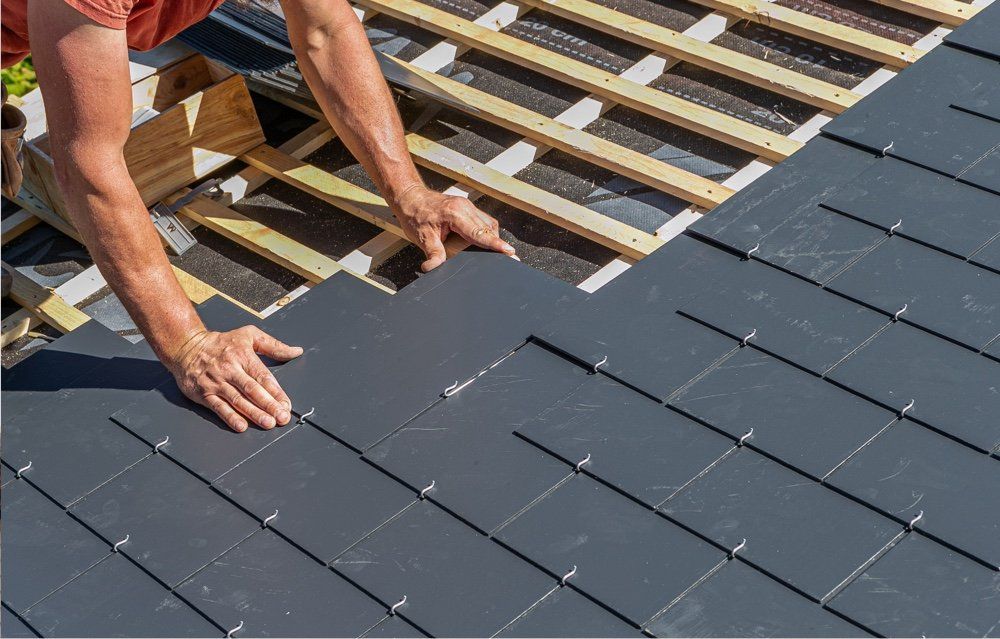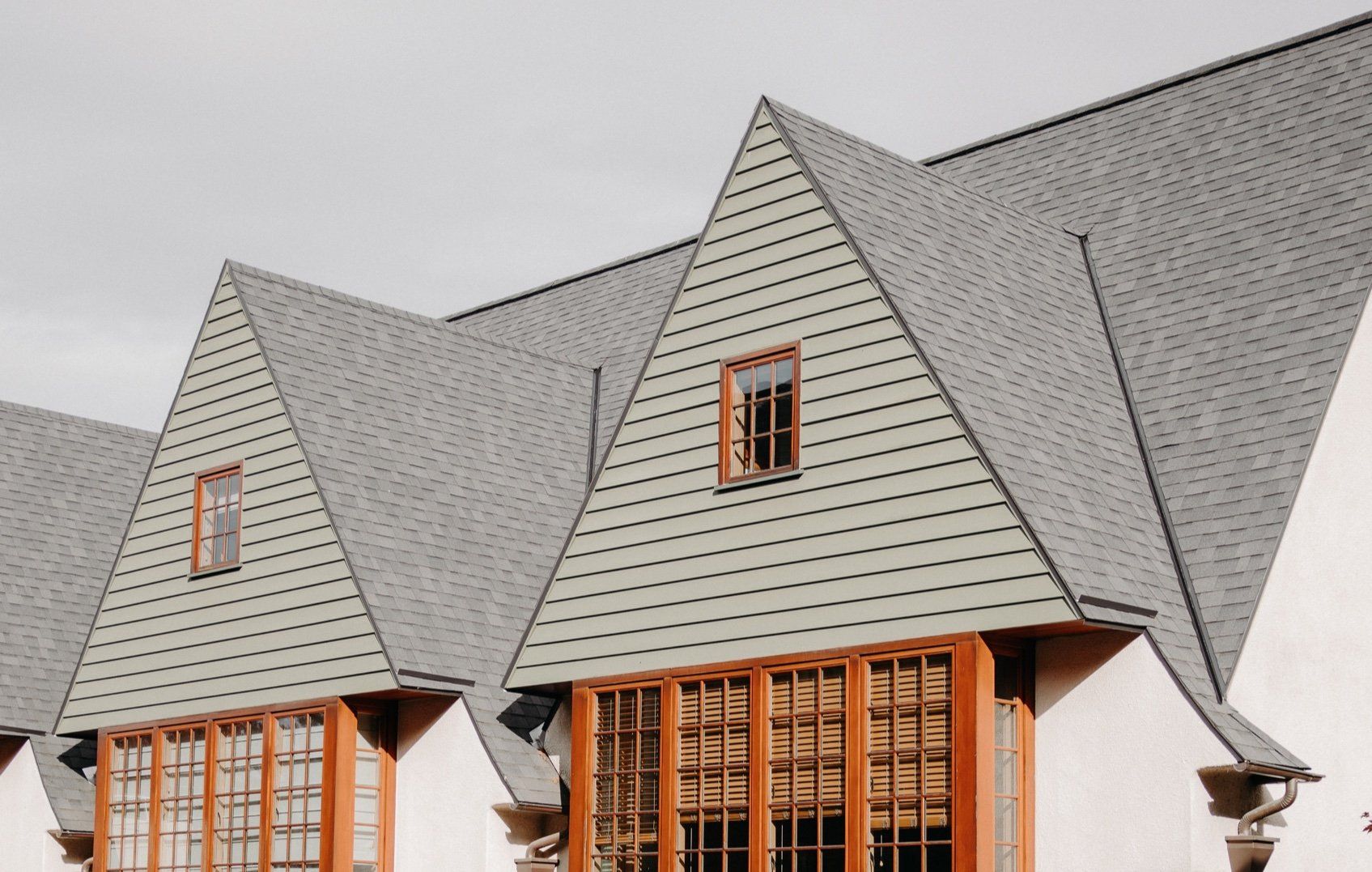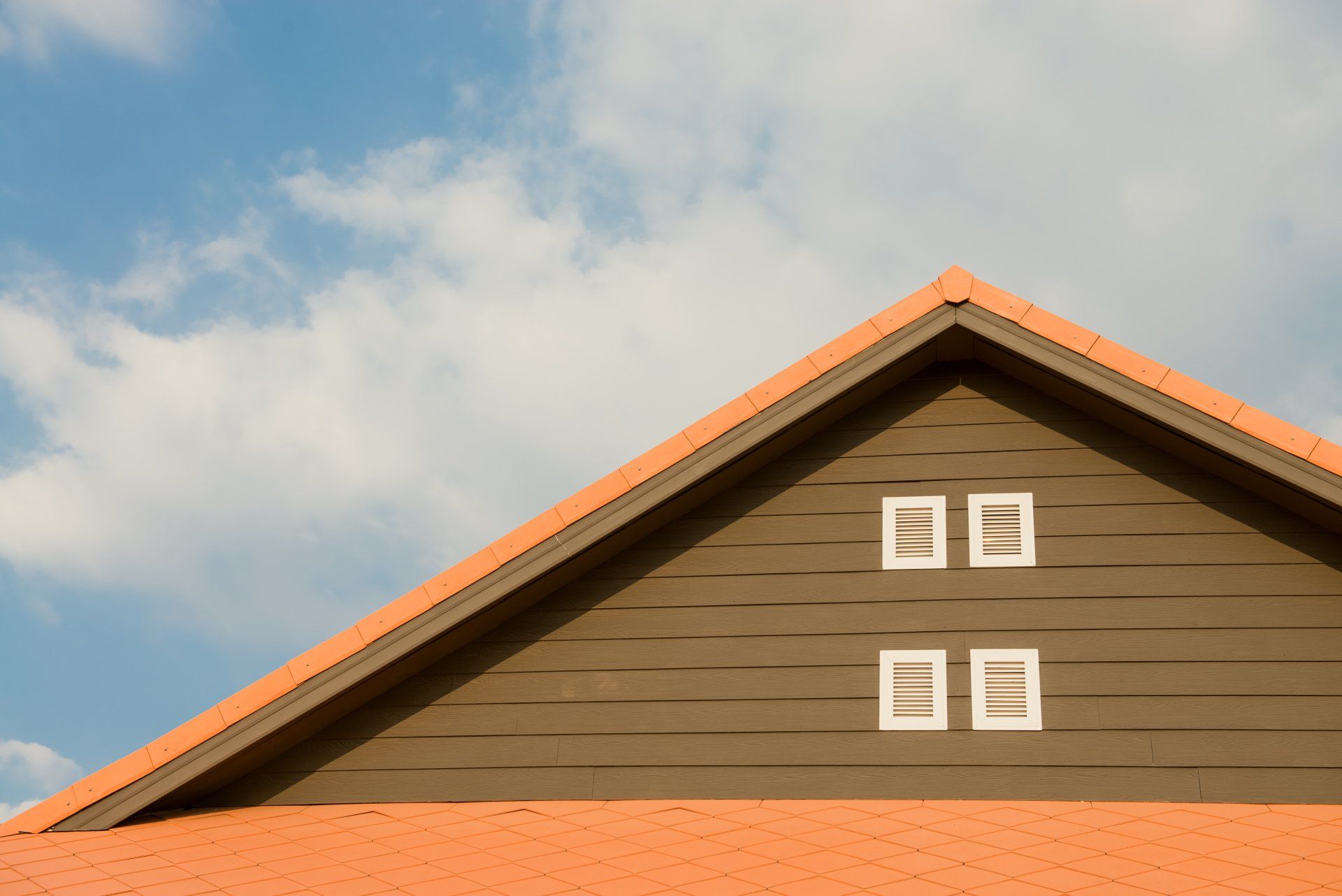New Construction
Thermoplastic
Thermoplastic polyolefin (TPO) single-ply roofing membranes are among the fastest growing commercial roofing products and have gained broad industry acceptance for their many performance and installation advantages.
As demand increases for heat-reflective and energy efficient roofing systems, TPO single-ply roofing membranes continue to provide exceptional resistance to ultraviolet, ozone and chemical exposure. In addition, white materials are highly reflective of the sun’s radiant heat and may have a high thermal emittance value (a measure of how much of the absorbed radiant energy is given off into the atmosphere).
TPO and PVC Roofs Thermoplastic Polyolefin (TPO) and Poly Vinyl Chloride (PVC) are thermoplastic roof systems that are both white and highly reflective roof membranes. These roofs provide excellent weathering characteristics and are highly resistant to ultraviolet light and most chemicals. The membranes have a reinforced scrim and are puncture and tear resistant. Thermoplastic roofs have outstanding seam strength due to the fact the sheets are welded together using hot air. These types of roof systems are lightweight and well suited for second generation (roof-over) applications.
There are three typical installation methods for TPO and PVC roof systems that provide lightweight and cost-effective solutions:
- Mechanically Attached – The roof membrane is affixed to the structural deck with mechanical fasteners.
- Fully Adhered – The membrane is bonded directly to the affixed insulation board or other roofing membrane substrate.
- Point-affixed – Ideal for retrofit installation over metal applications, plates are installed at set intervals and the roof membrane is welded directly to the plates.
EPDM - Rubber Roofing
Durability, design versatility and installation ease are among the many reasons ethylene propylene diene monomer (EPDM) is the most popular material for both new and reroof low-slope roofing applications.
Ethyline Propolyne Diene Terpolymer (EPDM) is a dimensionally stable membrane that can withstand and resist almost any type of nature-born stress. This single-ply roof membrane, also commonly referred to as a rubber roof system, utilizes carbon black as its the molecular “backbone” which enables it to take on characteristics such as the ability to expand up to 300% yet retain 100% structural memory. EPDM also has excellent weathering resistance and serves as a superb second generation (roof-over) application.
EPDM roof systems are typically installed in one of three methods:
- Mechanically attached – This application provides a lightweight, cost-effective solution whereby the roof membrane is affixed to the structural deck utilizing mechanical anchors.
- Fully adhered – The system is applied by bonding the membrane directly to the affixed insulation board or other roofing membrane substrate.
- Ballasted – Using large sheets and 10 to 12 pounds of rock ballast per square foot to hold the membrane in place, this roof system can be the most cost-effective due to the ease and speed of installation. However, this application does require a structural engineer’s approval.
Steep Slope
Steep Slope Roofing usually refers to roofing materials suitable for roofs that have slopes of 3:12 or greater. These include asphalt roll roofing, asphalt shingles, concrete and clay tiles, wood shakes, slate and metal roofs. Additionally, some of the modified bituminous roofing as well as certain adhered single ply membranes and SPF foam can also be used in certain steep slope roofing applications. The most common steep slope roofing types are asphalt shingles, concrete and clay tiles and wood shakes and are most often associated with residential construction but can also be used for steep sloped commercial roofing as well.
Bitumen
Built up roof membranes, referred to by the acronym BUR, have been in use in the U.S. for more than 100 years. These roof systems are commonly referred to as “tar and gravel” roofs. BUR systems generally are composed of alternating layers of bitumen and reinforcing fabrics that create a finished membrane.
The number of plies in a cross section is the number of plies on a roof: The term “four plies” denotes a four ply roof membrane construction. Sometimes, a base sheet, used as the bottommost ply, is mechanically fastened. Built up roofs generally are considered to be fully adhered if applied directly to roof decks or insulation.
The reinforcing fabrics also are called roofing felts or ply sheets. Roofing felts are reinforced with either glass-fiber mats or organic mats. Felts are produced in a standard width of 36 inches and metric width of about one meter.
The bitumen typically used in BUR roof systems is asphalt, coal tar or cold-applied adhesive. The asphalt or coal tar is heated in a kettle or tanker and then applied by mop or mechanical spreader. Asphalt is a petroleum product refined from crude oil; coal tar is derived from the distillation of coal. Cold-applied adhesives typically are solvent-based asphalts that don’t have to be heated in a kettle or tanker.
A roof system composed of a built up roof membrane with two or three plies and a polymer-modified bitumen membrane cap sheet is commonly referred to as “hybrid” system. NRCA considers this type to be a polymer modified bitumen membrane system.
Architectural Sheet Metal
Architectural Sheet Metal is a specialized type of metal roofing, typically involving steep slopes. These roofs feature custom fabricated sheet metal flashing and trim and generally are used for historic, retrofit projects.
We work with various gauge metals and various types of metals, ranging from pre-finished galvanized steel and aluminum to copper, stainless steel, lead and coated copper.
Architectural sheet metal roofs are usually used on homes and smaller buildings, since most commercial buildings have gently-sloped or flat roofs that are better suited to other types of roofing systems.
Architectural sheet metal can add distinction to any building, and one of the most famous examples is the Empire State Building in New York. Sheet metal can be used as the structure of a roof, the facing of a roof, or as an accent for a roof.
We can install and repair architectural sheet metals, in all types and thicknesses.
Elastomeric Coatings
Coatings extend the life of your roof. There are times when you may need a new roof and there are times when coatings may help enhance your current roof system. Coatings can be applied to EPDM, Metal, Modified Bitumen and BUR. It fills in cracks, seals porous mortar and masonry. Coatings will expand and contract with metal panels while providing weatherproofing.
Superior weatherability, ultraviolet resistance, fire retardant, elongation, mildew resistance, flexibility, adhesion, and ease of application make the elastomeric system an excellent protective barrier for extending the life of most roofing substrates.
Top three reasons you get even more savings – immediately
- You don’t have to pay for “tear off” of your existing roof. Elastomeric roof coatings are sprayed on top of what’s there (after careful preparation of the surface). Tear off is a large cost in roof replacement.
- In addition, an acrylic roof does not count as an additional layer in building codes. So there’s no need to remove any of the existing roof to get the project up to code.
- The roof coating does not add “dead weight” to your building; there’s no negative effect on the structural integrity of the structure.
If your roof needs attention and you are unsure about the cost of roof replacement, we’d like you to know that roof coatings cost half as much – 50% less – than re-roofing. We are proud to offer elastomeric roof coatings, an exceptional roofing innovation.
Spray Polyurethane Foam
Unlike roof systems that are mechanically attached or adhered, SPF is sprayed onto a roof. It is a seamless application of polyurethane foam that provides a variety of finishes that meet and exceed standard UL and ASTM specifications. Since tear-off of the current roof is not always needed, SPF reduces costs, noise and inconvenience during installation.
The Process
The Spray Polyurethane Foam roofs are applied in a two-part liquid process that dries quickly to form a seamless waterproof barrier. This barrier adds insulation and can be field fabricated to provide taper and slope so the roof can drain effectively. Foam roofs provide increased insulation and reflectivity and among various other attributes are fire resistant.
Coating
Once the roof is installed they are then coated. It is the coating that protects the polyisocyanurate “foam” from ultraviolet degradation. The coating can be installed with one of many products: silicone coating, urethane coating, polyurea coating or an acrylic coating. Rocky Mountain Roofing and Restoration can apply all coatings.
For added protection and slip resistance, granules can be broadcasted into the coating. Rocky Mountain Roofing and Restoration can also provide a cementitious layer that can be used as the coating over the Spray Polyurethane Foam roof systems which provides for a very durable finish that is excellent for high traffic areas.
Because foam roofs are extremely sensitive and proper application is dependent upon the crew installing the system, it is critical to utilize a contractor with foam roof installation expertise.
In addition to having this expertise and vast experience. Rocky Mountain Roofing and Restoration can also assist clients in exploring the potential of government and utility based incentives that may be available in conjunction with the application of a Spray Polyurethane Foam roof.
Vegetative Roof Systems
A Vegetative Roof Assembly creates a more usable amenity space in the form of rooftop terraces, walkways, plazas and gardens. Gaining widespread acceptance, vegetative roofs offer the following practical, financial and environmental benefits:
- Financial incentives available from local, state and federal government agencies
- Extended life of roofing components; eliminate UV exposure and minimize thermal cycling
- Improved energy efficiency to reduce a buildings’ heating/cooling costs
Research has shown that the installation of a vegetative roof can result in a number of important environmental benefits. These are so significant that in many areas, sustainable roofing designs are being mandated in order to:
- Reduce storm water runoff and sewer bills – Plants absorb water, reducing load on sewage treatment plants, helping to keep contaminants out of lakes and streams.
- Reduce urban heat island effect – When compared to a black-surfaced roof on a sunny summer day, a vegetative roof can be 60 °F or more cooler.
- Improve air quality – Rooftop vegetation converts carbon dioxide to oxygen.
Working hand in hand with our horticulturally trained crews, Rocky Mountain Roofing and Restoration technicians install roofing from the deck up through vegetation, and we don’t walk away without being certain a proper maintenance plan is in place. That way you’re assured your green roof is the healthiest it can be. Today, tomorrow, and in the years ahead.
Rocky Mountain Roofing and Restoration
$500 OFF
full roof restoration/Home improvement
Up to 50 square. Some restrictions may apply. Must be present at the time of estimate.
$100 Referral Program
We are giving $100 for every fully executed complete roof replacement!
Insurance Claim
Rocky Mountain is YOUR ADVOCATE in completeing your insurance claim. Click to learn more.
Best Price Guarantee
Click to view our Best Price Guarantee brochure for details.








